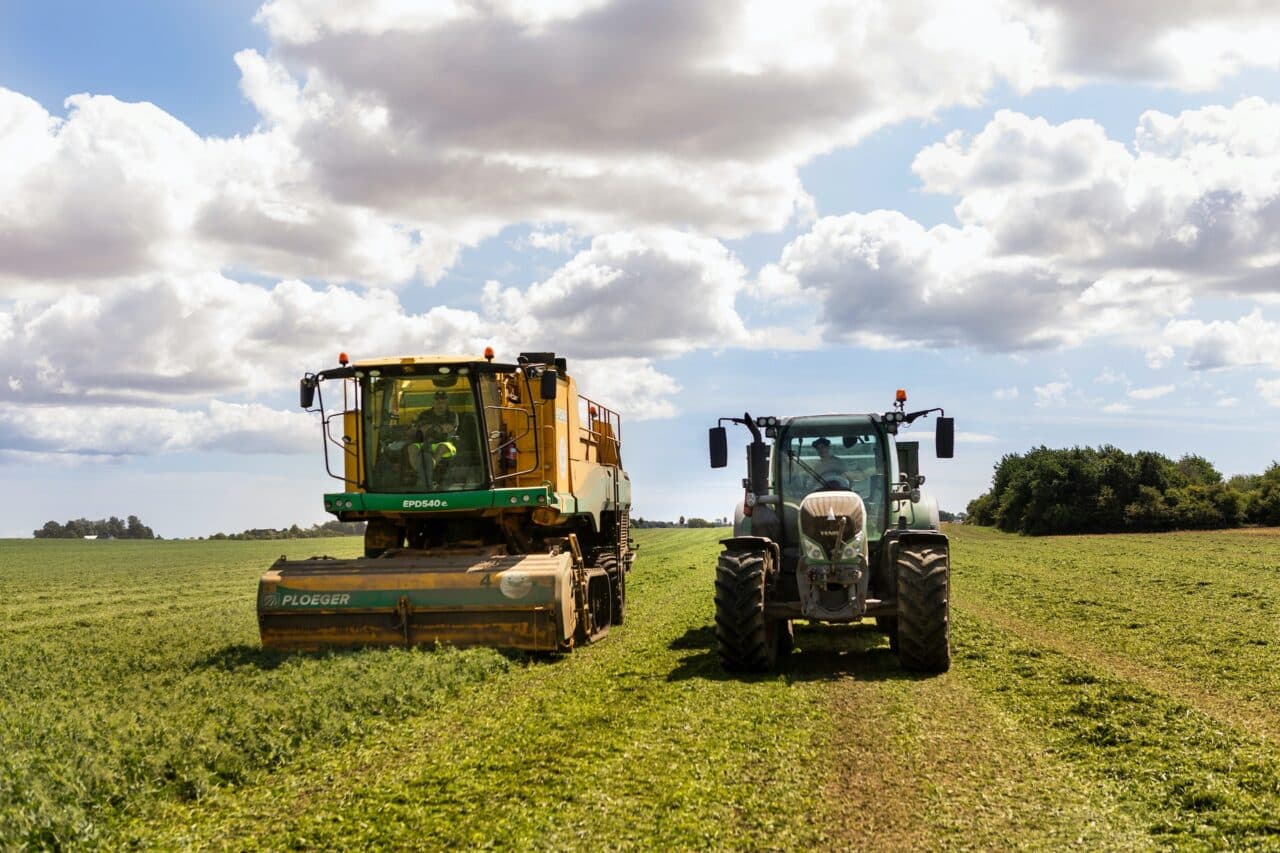Sowing usually starts in March and continues until midsummer. Based on the area, the timing according to the sowing plan, the germination rate, the thousand-seed weight, and the variety, it is carefully calculated how much seed each field needs, aiming to achieve 100 well-established plants per square meter in each field.
Weather, weather, and weather.
The seeds are sent out to the growers from February onwards. Everything depends on the weather. The growers are prepared with preliminary sowing plans, but the exact day the seeds arrive depends on the weather and conditions. Therefore, the grower receives a text message the day before the seeds are delivered. As for the harvesters, they need to be carefully prepared for the harvest. They are serviced during the winter, but additional equipment such as gloves, scrapers, and window cleaners must be added.
Training the next generation.
In mid-June, the seasonal staff arrives, and Mikael is primarily responsible for field training. Mikael possesses knowledge that he passes on to the next generation every year. This includes the advanced technology in the harvesters, how to drive in the field and on the road, all to avoid spillage, be efficient, and prevent accidents and stoppages.
Peas don’t always follow the sowing plans!
When the harvest starts, the work is done around the clock in three shifts. As previously mentioned, there is a sowing plan that serves as the basis for the harvesting time. Unfortunately, the fields do not always ripen in the planned order. Therefore, all plans are reviewed every day in internal meetings at lunchtime.
Daily harvest decisions.
Through samples taken in the field and the overview of cultivation consultants, it is ensured that the right field is harvested at the right time. This means that Foodhills makes daily decisions about which fields to harvest. Depending on the weather, there may be delays or urgency. Or entirely new fields that have ripened faster than the planned field. The cultivation consultants interact with the affected growers.
Then the harvesters go into winter hibernation.
When the harvest is over, Mikael takes care of the harvesters and cleans them for winter hibernation so that they are ready for the next season. The work until the end of the year includes soil sampling and planning for the upcoming season.
– This year, everything is with us. Both growers, weather, and we are more seasoned after all the new changes. New factory, new people, and new technology, Mikael explains.




